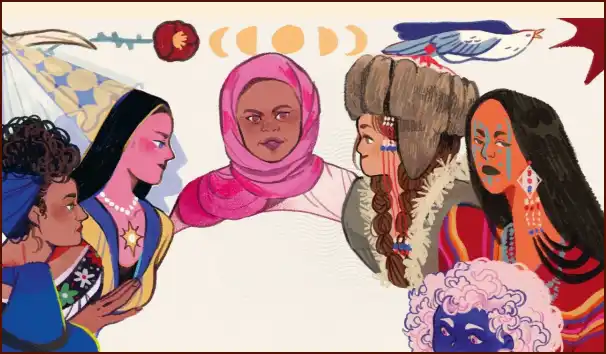Magic in Japanese culture is deeply woven into religion and folklore, shaped by the traditional Shinto religion. Shinto teaches that spirits, known as kami, inhabit everything in nature, from mountains to rivers. People with specialized knowledge are believed to be able to control the powers of these spirits. While not always called ‘witches,’ Japanese folklore is rich with a variety of supernatural spirits, or yōkai, which can be either helpful or harmful.
Table of Contents
📿 Onmyōdō and the Five Elements
A key magical practice in Japan is Onmyōdō, a system of divination based on the principles of yin-yang and the five elements: wood, fire, earth, metal, and water. Practitioners, known as onmyōji, were tasked with telling fortunes, reading omens from the stars, and performing exorcisms. Their predictions were so highly valued that they influenced important decisions at the royal court for centuries.
👻 The World of Yōkai Spirits
The world of yōkai is vast and varied. One notable type is the yamauba, or ‘mountain hags,’ who live deep in remote forests and prey on lost wanderers. Another famous yōkai is the kitsune, a fox spirit that grows more tails and becomes more powerful with age. It was believed that ‘fox witches’ could command kitsune by making deals with them. There is also the bakeneko, a supernatural cat with magical abilities like dancing, casting curses, and possessing people, as told in the chilling legend of the Cat Witch of Okazaki.
—
Atkinson, Hazel. The Extraordinary History of Witches. 2025.
More Topics
- Curses: The History of the Evil Eye and Binding Magic
- Magical Plants: A Witch’s Garden of Herbs and Poisons
- Roman Magic: Curses, the Strix, and Everyday Protection
- Circe: The Greek Sorceress of Transformation and Myth
- Greek Magic: Hecate’s Power, Oracles, and Enchantresses
- Empress Chen Jiao: The Royal Scandal of Witchcraft in Han China
- Chinese Magic: The Powers of Wu Sorcerers and Dynastic Witch Hunts

